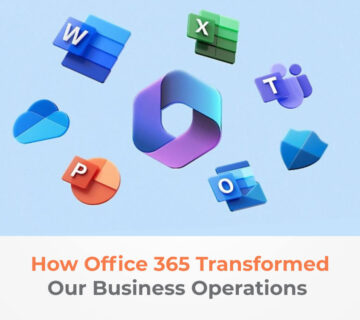ASP.NET MVC vs. Web Forms: Choosing the Right .NET Framework
Get Your Free Copy Now! Click the link below and fill out the form to access the white paper.
In the world of .NET application development, choosing the right framework is crucial for the success and scalability of your project. ASP.NET MVC and Web Forms are two popular frameworks that cater to different development needs. This comprehensive guide will explore the key differences between ASP.NET MVC and Web Forms, helping you make an informed decision for your .NET application. Additionally, we will discuss how Technijian can be your trusted partner in .NET development.
Introduction
The .NET ecosystem offers various frameworks for building web applications, with ASP.NET MVC and Web Forms being two of the most prominent. Each framework has its strengths and weaknesses, and the choice between them depends on your project requirements, development team expertise, and long-term maintenance considerations. This guide will provide a detailed comparison of ASP.NET MVC and Web Forms, highlighting their features, advantages, and use cases. Furthermore, Technijian’s expertise in .NET development can help you navigate this decision and ensure your project’s success.
Understanding ASP.NET MVC and Web Forms
What is ASP.NET MVC? ASP.NET MVC (Model-View-Controller) is a framework for building web applications that emphasizes a clean separation of concerns. It provides a robust and flexible architecture, making it suitable for complex and scalable applications.
Key Features of ASP.NET MVC:
- Separation of Concerns: Divides the application into three main components: Model, View, and Controller, facilitating better code organization and maintainability.
- Testability: Enhances testability with support for unit testing and Test-Driven Development (TDD).
- Extensibility: Offers a high degree of extensibility through custom views, controllers, and models.
- Routing: Uses a powerful URL routing mechanism that enables clean and SEO-friendly URLs.
What is Web Forms? Web Forms is a traditional framework for building web applications in the .NET ecosystem. It uses a drag-and-drop, event-driven development model, making it accessible to developers with a background in desktop application development.
Key Features of Web Forms:
- Event-Driven Model: Simplifies development with an event-driven approach, similar to Windows Forms applications.
- Rapid Development: Facilitates rapid development through a rich set of server controls and a visual designer.
- State Management: Provides built-in state management techniques, such as ViewState and Session State.
- Postback Model: Uses a postback model for handling user interactions and server-side processing.
Comparing ASP.NET MVC and Web Forms
Development Approach
- ASP.NET MVC: Emphasizes a stateless, request-driven model with a focus on clean architecture and separation of concerns. Ideal for developers who prefer a structured and testable codebase.
- Web Forms: Follows a stateful, event-driven model with a focus on rapid application development. Suitable for developers who prefer a visual, drag-and-drop interface.
Performance and Scalability
- ASP.NET MVC: Generally offers better performance and scalability due to its stateless nature and fine-grained control over HTML output.
- Web Forms: Can experience performance bottlenecks due to ViewState and the complexity of server controls, making it less suitable for highly scalable applications.
Control and Flexibility
- ASP.NET MVC: Provides greater control over HTML, CSS, and JavaScript, allowing for highly customized and responsive user interfaces.
- Web Forms: Limited control over HTML output and reliance on server controls can result in less flexible and less responsive user interfaces.
Learning Curve
- ASP.NET MVC: Steeper learning curve, particularly for developers unfamiliar with the MVC pattern and modern web development practices.
- Web Forms: Easier to learn for developers with a background in desktop application development or those who prefer a visual development approach.
Use Cases
- ASP.NET MVC: Ideal for complex, large-scale applications that require high performance, scalability, and maintainability. Suitable for applications that need fine-grained control over the user interface and responsive design.
- Web Forms: Best suited for small to medium-sized applications with rapid development needs. Suitable for applications where a quick turnaround is essential, and performance/scalability is not the primary concern.
How Technijian Can Help You Choose and Implement the Right Framework
Why Choose Technijian? Technijian stands out as a trusted partner in navigating the complexities of .NET development. With extensive experience and expertise in both ASP.NET MVC and Web Forms, Technijian offers tailored services to meet the unique needs of your organization.
Comprehensive Needs Assessment Technijian begins with a thorough needs assessment to understand your business requirements, project goals, and technical constraints. This ensures that the framework chosen aligns perfectly with your operational objectives.
Expert Guidance and Implementation Our team of experts provides detailed guidance on selecting the right framework for your .NET application. We handle all aspects of the implementation process, ensuring that your project is developed efficiently and meets the highest quality standards.
Ongoing Support and Maintenance Technijian provides continuous support and maintenance services, ensuring that your .NET applications remain robust and efficient. Our proactive approach to troubleshooting and updates guarantees that your systems operate smoothly.
Custom Solutions for Enhanced Performance Recognizing that every organization has unique needs, Technijian develops custom solutions to enhance your .NET development process. Whether it’s integrating specific tools, optimizing existing workflows, or addressing unique security requirements, we tailor our services to deliver optimal results.
Case Study: Successfully Transitioning from Web Forms to ASP.NET MVC with Technijian
Consider a scenario where Technijian assisted a financial services firm in transitioning from Web Forms to ASP.NET MVC. Initially, the firm faced challenges with scalability and maintainability using Web Forms. Technijian conducted a comprehensive needs assessment, recommended ASP.NET MVC for its superior performance and scalability, and handled the migration process. The result was a significant improvement in application performance, maintainability, and overall user experience.
Conclusion
Choosing the right framework for your .NET application is critical for ensuring its success, scalability, and maintainability. ASP.NET MVC and Web Forms each offer distinct advantages, and the choice between them depends on your specific project requirements and development team expertise. With Technijian’s guidance, you can make an informed decision and implement the framework that best suits your needs, ensuring a successful outcome for your .NET project.
Ready to choose the right framework for your .NET application with expert guidance? Contact Technijian today for a free consultation and discover how our customized solutions can elevate your .NET development projects.
Unlock the full potential of your .NET applications with Technijian. Learn how to choose and implement the best framework for your needs with our expert assistance.
FAQs
What is the main difference between ASP.NET MVC and Web Forms? The main difference lies in their development models: ASP.NET MVC follows a stateless, request-driven model with a focus on separation of concerns, while Web Forms follows a stateful, event-driven model with a focus on rapid development using server controls.
Which framework offers better performance and scalability? ASP.NET MVC generally offers better performance and scalability due to its stateless nature and fine-grained control over HTML output.
Is ASP.NET MVC harder to learn than Web Forms? ASP.NET MVC has a steeper learning curve, particularly for developers unfamiliar with the MVC pattern and modern web development practices. Web Forms is easier to learn for those with a background in desktop application development.
How can Technijian help with .NET development? Technijian provides comprehensive services including needs assessment, expert guidance, implementation, ongoing support, and custom solutions to ensure your .NET projects are successful.
What are the use cases for ASP.NET MVC? ASP.NET MVC is ideal for complex, large-scale applications that require high performance, scalability, and maintainability, as well as fine-grained control over the user interface and responsive design.
What are the use cases for Web Forms? Web Forms is best suited for small to medium-sized applications with rapid development needs, where performance and scalability are not the primary concerns.





